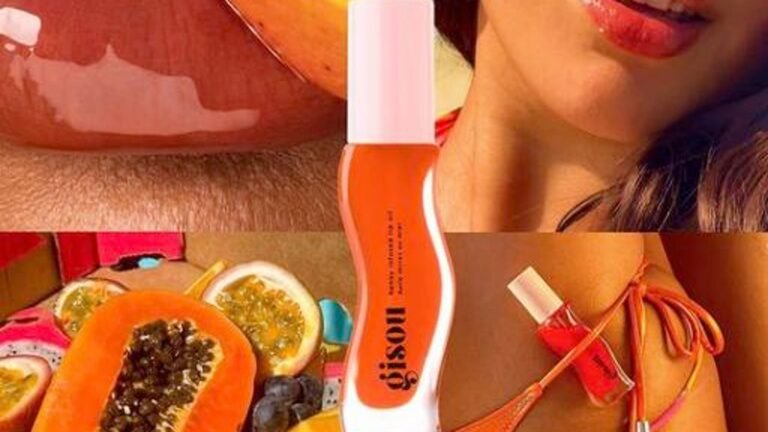This Is What It’s Really Like to Dissolve Your Filler

Introduction
Dissolving filler using hyaluronidase: In this article, we will explore the process of dissolving dermal fillers with hyaluronidase as a solution.
Key Takeaway: We will discuss how hyaluronidase works to break down fillers, the effects and results you can expect from the procedure, important considerations to keep in mind, and more.
Growing popularity: Filler dissolution has become increasingly popular as a way to reverse unwanted results and provide individuals with a fresh start.
The process of dissolving fillers involves the use of an enzyme substance called hyaluronidase. This substance is injected near the unwanted filler and works by breaking down the hyaluronic acid filler. The procedure usually takes just a few minutes and may involve the application of numbing cream before the injections.
One of the key benefits of filler dissolution is that it provides individuals with the opportunity to correct or adjust their appearance if they are unsatisfied with their current filler results. It allows for a fresh canvas on which new treatments can be performed.
As more people have become aware of this option, the popularity of filler dissolution has grown significantly. Individuals are finding comfort in knowing that there is a solution available if they are unhappy with their fillers or if they experience complications.
Understanding the Process: How Hyaluronidase Works to Dissolve Fillers
Hyaluronidase is an enzyme substance that effectively breaks down hyaluronic acid fillers, which are commonly used in dermal treatments. This enzymatic breakdown allows for the gradual absorption and dispersion of the filler material within the skin.
Strategic Placement and Injection Process
When using hyaluronidase to dissolve fillers, the injection process involves strategic placement near the unwanted filler. The healthcare provider will typically use a fine needle to deliver the enzyme into specific areas where the filler needs to be dissolved.
Numbing Cream Application for Comfort
To ensure comfort during treatment, numbing cream may be applied beforehand to minimize any potential discomfort associated with the injections.
Efficiency and Duration of the Procedure
The procedure for dissolving fillers with hyaluronidase is relatively efficient, often taking only a few minutes to complete. However, it’s essential to note that individual cases may vary based on the amount of filler being targeted and its location within the skin.
Immediate Effects vs. Gradual Reduction
As for results, some individuals may experience immediate effects following the administration of hyaluronidase, while others might observe a more gradual reduction in filler appearance over a short period.
Understanding how hyaluronidase works to dissolve fillers provides insight into the technical aspect of this process. It offers reassurance regarding the efficiency and precision involved in targeting specific areas for filler removal. Additionally, being aware of the potential time frame for both the procedure and expected results can help individuals set realistic expectations when undergoing filler dissolution.
The Effects, Results, and Potential Considerations of Filler Dissolution
When you choose to dissolve filler using hyaluronidase, there are a few things you should keep in mind. Let’s take a closer look at what happens right away, any possible dangers, and what might occur down the line. We’ll also discuss the cost factor.
Immediate Effects
After getting filler dissolution treatment, you may notice some immediate changes. These can differ based on your unique body chemistry and the specific filler being removed. Here are a few common things that could happen:
- Mild swelling: It’s normal for the treated area to swell slightly after filler dissolution. This usually goes away within a few days.
- Temporary fuller appearance: Sometimes, the spot where the filler was dissolved may look temporarily plumper than usual. This is usually due to inflammation caused by the dissolving process and should go away on its own.
- Possible volume loss or unevenness: While hyaluronidase is great at breaking down hyaluronic acid fillers, there’s still a chance you might lose some volume or end up with an uneven look in the treated area. This is more likely if you had a lot of filler removed or if there were already irregularities before the treatment.
Potential Risks and Long-Term Consequences
Just like with any medical procedure, there are risks and potential long-term consequences associated with filler dissolution. It’s important to know about these before making your decision. Here are a few things to consider:
- Volume loss: Even though the goal of filler dissolution is to get rid of unwanted filler, it could also lead to some degree of volume loss in the treated area. This is more likely if you had a large amount of filler dissolved or if you had multiple rounds of fillers in that area.
- Unevenness or lumps: There’s a chance you might end up with an uneven look or lumps in the treated area after filler dissolution. This can happen if the filler wasn’t spread out evenly or if there were already irregularities that become more noticeable after the dissolving process.
- Potential scarring: While it’s rare, there is a small risk of developing scars in the treated area after filler dissolution. Choosing a skilled and experienced provider who uses proper injection techniques can help minimize this risk.
- Delayed results: While you might see some immediate effects after filler dissolution, it’s important to remember that it could take time for the final results to fully show up. This is because your body needs time to break down and remove the dissolved filler.
Cost Factors
The cost of getting filler dissolved can vary depending on a few factors. Here are some things to think about:
- Different prices in different areas: The cost of filler dissolution can be higher or lower depending on where you live. In places with a higher cost of living or where medical procedures tend to be more expensive, you might have to pay more for the treatment.
- Amount of hyaluronidase used: The overall cost can also be influenced by how much hyaluronidase is needed for your specific case. If you had a large amount of filler injected, it might take more hyaluronidase to fully dissolve it.
- Experience level of the provider: The experience and expertise of the healthcare provider doing the procedure can also affect the cost. Providers who have been doing this for a while and have a good reputation might charge higher fees for their services.
It’s crucial to pick a skilled provider who knows how to dissolve fillers and can accurately assess what you need. While cost is something to think about, you shouldn’t compromise on quality and safety when choosing a provider.
Understanding what happens during and after filler dissolution is key before you decide to go ahead with it. By knowing about the possible immediate effects, potential risks, long-term consequences, and cost factors involved, you can make a better choice that suits you. Remember to talk to a qualified healthcare provider who can look at your specific situation and guide you through the process.
Dissolving Lip Fillers: Special Considerations and Expected Outcomes
When it comes to dissolving lip fillers with hyaluronidase, there are specific considerations and outcomes to be mindful of:
1. Safety Profile
Dissolving lip fillers with hyaluronidase is considered a safe procedure for reducing the effects of hyaluronic acid lip fillers. The enzyme works to break down the filler, allowing the lips to gradually return to their pre-filler appearance after dissolution. This process is different from dissolving fillers in other areas of the face due to the delicate nature of the lips.
2. Common Reasons for Dissolution
Individuals may choose to have their lip fillers dissolved for various reasons. Some may experience dissatisfaction with the results achieved through lip augmentation, while others might opt for dissolution due to aesthetic changes over time. It’s essential to consider personal preferences and expectations when deciding on this procedure.
3. Realistic Expectations
When undergoing lip filler dissolution, it’s important to set realistic expectations for the outcome. While the goal is often to return the lips to their pre-filler state, it’s crucial to understand that complete reversal may not always be achievable. Factors such as the initial volume of filler and individual healing processes can influence the final results.
Dissolving lip fillers with hyaluronidase offers a way to address concerns related to lip augmentation while prioritizing safety and gradual restoration of one’s natural appearance. By understanding the specific considerations and expected outcomes associated with this process, individuals can make informed decisions regarding their lip filler treatments.
Consultation with a Healthcare Provider: The Importance of Seeking Professional Advice
When considering filler dissolution, it is essential to prioritize your safety and well-being by consulting with a qualified healthcare provider. A professional, such as a cosmetic surgeon or dermatologist, can offer valuable insights and guidance throughout the process.
During a comprehensive consultation with a healthcare provider, you can expect the following:
- Assessment of Suitability: Your provider will carefully assess your individual situation to determine if filler dissolution is an appropriate course of action for you. Factors such as your medical history, current health status, and specific concerns will be taken into consideration to ensure the procedure aligns with your needs and goals.
It’s important to note that in rare cases, severe allergic reactions to hyaluronidase may occur. While this is uncommon, being under the care of a qualified healthcare provider ensures that emergency measures can be promptly administered if needed. Your provider will be equipped to address any unexpected reactions and provide the necessary support for your well-being.
By seeking professional advice and undergoing a thorough consultation, you can make informed decisions regarding filler dissolution, ultimately contributing to a safe and satisfactory experience.
Alternatives to Filler Dissolution: Exploring Other Options for Correcting Unwanted Results
When dealing with unwanted results from dermal fillers, it’s crucial to know that filler dissolution isn’t the only solution. Depending on the issue at hand, there are other methods to consider before opting for hyaluronidase treatment.
Time-Based Fading
Instead of dissolving the fillers, one option is to let them naturally fade away over time. Hyaluronic acid fillers are gradually broken down by the body’s metabolism, leading to a reduction in their volume and effects. This process may help resolve undesired outcomes without the need for additional interventions. Keep in mind, though, that the duration for natural fading can vary based on the specific type of filler used and individual metabolic rates.
Strategic Massage Technique
Another alternative worth exploring is the strategic use of massage to address certain filler-related concerns. In some cases, gentle and targeted massage techniques performed by skilled professionals may help redistribute filler material or alleviate irregularities in the treated area. By manipulating the filler in a controlled manner, it’s possible to improve symmetry or smooth out any unevenness caused by previous filler injections. However, it’s crucial that this technique is only performed by experienced practitioners familiar with the nuances of dermal fillers and their interactions with facial tissues.
By considering these alternatives, individuals can make informed decisions about how they wish to address unwanted filler results. It’s important to consult with qualified healthcare providers to determine the most suitable approach based on individual circumstances and treatment goals.
In exploring these alternative options, individuals can gain a comprehensive understanding of the available choices for correcting unwanted filler outcomes. Each approach carries its own considerations and potential benefits, highlighting the importance of personalized assessments and tailored recommendations from experienced professionals.
Conclusion
When deciding whether to dissolve dermal fillers, it’s important to consider the potential risks and side effects compared to the chance for correction. While hyaluronidase can effectively reverse unwanted results, it may not always completely undo the effects of the filler.
Here are some key points to remember:
- Safety first: Your well-being should always be the top priority. Make sure to prioritize safety by consulting with a qualified healthcare provider before making any decisions.
- Professional guidance: Seeking advice from experts like cosmetic surgeons or dermatologists can provide valuable insights tailored to your specific needs.
- Realistic expectations: Understand that the outcome of filler dissolution can vary depending on factors such as your body chemistry and the type of filler used. It may not always be possible to return to your pre-filler appearance entirely.
- Informed choices: Take the time to educate yourself about the procedure, its potential benefits, and drawbacks. This will help you make an informed decision that aligns with your goals.
Dissolving dermal fillers with hyaluronidase offers a viable option for correcting undesired outcomes. However, it’s crucial to prioritize safety, seek professional advice, and manage expectations throughout the process. By doing so, you can make an informed decision and take the necessary steps towards achieving your desired aesthetic results.
Remember, your journey to dissolving fillers should always prioritize safety and well-being.










